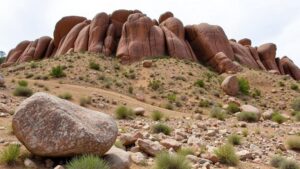The Role of Dry Panning in Arizona’s Rich Rich Hill Placers
The Role of Dry Panning in Arizona’s Rich Rich Hill Placers
Dry panning, a unique method of gold extraction, has played a significant role in mining operations, particularly in Arizonas famed Rich Hill placers. These placers, located in the heart of the Arizona Gold Belt, have yielded substantial quantities of gold since their discovery in the mid-19th century. Understanding the significance and the mechanics of dry panning provides insights into both historical and contemporary mining practices.
Understanding Dry Panning
Dry panning refers to a technique used for separating valuable minerals from soil or gravel without the use of water. This method involves using a dry pan to agitate the material, allowing the denser gold particles to settle at the bottom while lighter materials are discarded. Unlike traditional wet panning, which relies on water to assist in the separation process, dry panning is particularly advantageous in arid regions like Arizona.
The Historical Context of Rich Hill Placers
Rich Hill has a storied history, often referred to as a mother lode of the Arizona Gold Rush. Discovered by local prospectors in 1863, this area quickly became a hotspot for pioneers seeking fortune. initial discovery of gold brought thousands to the region, all eager to try their luck. But, the mining techniques employed evolved as the demand for efficiency and yield increased.
Advantages of Dry Panning in Arid Environments
Dry panning presents several advantages, making it particularly suitable for the rugged desert landscape of Arizona:
- Water Conservation: In arid regions where water sources are scarce, dry panning eliminates the need for water, making it a sustainable choice.
- Portability: The equipment required for dry panning is lighter and more portable than traditional wet panning gear, allowing miners to traverse vast areas more easily.
- Reduced Setup Time: The setup for dry panning is often quicker than for wet panning, enabling miners to maximize their operational time.
Technique and Best Practices
While the basic concept of dry panning is straightforward, mastering the technique is essential for maximizing gold recovery. Miners typically follow these steps:
- Material Selection: Mining from a known placer deposit increases the likelihood of gold recovery. Prospective areas are often identified through geological surveys.
- Load the Pan: Miners fill the pan with dry material, ensuring that it should contain both larger gravels and fine flakes of gold.
- Agitation: The key to dry panning is the rhythmic side-to-side shaking motion which allows denser materials to settle to the bottom.
- Observation: Miners frequently check the bottom of the pan through careful tipping and observation to monitor the collection of gold particles.
Case Study: Dry Panning Techniques in Rich Hill
In recent years, recreational miners have turned to dry panning in Rich Hill as part of their prospecting endeavors. For example, in 2022, a group of amateur miners employed dry panning to recover over 25 grams of gold during a week-long expedition. This success featured the combination of historic knowledge and modern techniques, showcasing the enduring relevance of dry panning. Plus, these operations often enrich local economies, as passion-driven miners purchase supplies and services within nearby towns.
Challenges and Considerations
Despite the advantages, dry panning also presents certain challenges:
- Labor Intensity: The lack of hydraulic assistance means that dry panning can be physically demanding.
- Lower Yields: Compared to wet methods, yield rates may be lower, affecting some miners decisions on the best techniques to use.
Conclusion and Future Directions
Dry panning remains a practical and effective approach for gold mining in Arizona’s Rich Hill placers. As mining technology continues to develop, the integration of traditional methods like dry panning with modern innovations could further enhance efficiency and retrieval rates. For aspiring miners, mastering dry panning techniques not only preserves historical practices but also enriches the mining experience in these unique geological landscapes.
To wrap up, understanding dry pannings role in Arizonas rich mining heritage emphasizes both sustainability and resourcefulness. Those interested in prospecting should study the history and application of such methods to maximize their potential for success.



